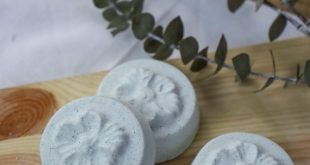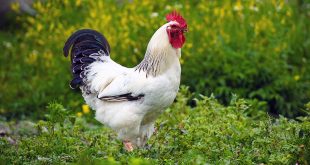It was brought home to me one afternoon when I looked out of my bedroom window to see if I could find flower buds on mine Magnolia campbellii that bloomed so strongly last year. I didn’t see any newer buds, but I noticed that some of my other plants took up a lot more space than they should and some got shaggy. Prune ornamental shrubs and trees calls for all the same tools that are used for roses and fruit treesplus good hedge trimmers.
Cuts on ornamental plants may need to be covered with a tree seal as well the one on roses and do fruit trees. When I checked my tree seal, I found it a bit thick to distribute it well. With a strong wooden trowel, I added water and gradually hammered in until the black mixture had the consistency of honey. Then it could be painted on the wound with a brush without running down the branch.
My first job was pruning the Osmanthus fragransor sweet olive right in front of the bedroom window. It had been in the past two years and was getting pretty shaggy. My plant is about 10 feet tall and I usually keep it about 3 feet wide. Now one foot must be removed from each side and from the front. I started with the hedge trimmer at the bottom and cut off the sides until they were level and fit into the wall space they were supposed to cover.
The top had to be cut back with a topper because the branches growing up were too large for the hair clipper. To keep this plant under control, I should have spent part of my summer squeezing the stem ends out to make the growth more compact.
My Arbutus uneda, also known as a strawberry tree, is planted on the corner of my driveway so that neither I nor my neighbor can see whether they can safely enter the street if it gets too big. Paint the wounds to control airborne disease germs. I use the pruning shears on this shrub and remove one branch in order to shape, train and thin it during work. This plant has a beautiful stem pattern and it is a shame to hide this beauty.
This plant is designed as a small tree with several trunks and is excellent. Dead branches should be cut out as soon as they are noticed. Arbutus menzleli, or Madrone, should also be trimmed now, but only trimmed to keep the head symmetrical.
Prune Choisya
My Choisya ternata got completely out of control when we planted a Japanese maple nearby, and it has resulted in the Choisya just reaching for more light. These evergreen shrub that the air perfumes so wonderfully in spring can be cut very hard and it will come back nicely. The best time to prune this shrub is immediately after flowering.
Start by thinning out the older branches in the middle to encourage new growth. When this is done, trim the remaining branches and make the cut just above one eye to bring it to the desired height. It will be bald for a while, but it grows quickly. Almost before you notice it, the ends are covered with leaf fans. While there is room to work, it’s a good idea to loosen the soil a bit, give the plant a generous spread of fertilizer, and water it. If the tips are pinched during the growing season to keep the plant shapely, a heavy cut will not be needed.
Prune clematis
I also grow a number of clematis. Because of my love of color, I chose it Species that bloom in both spring and summer. I prune the vines two feet from the ground when I want to hold a plant up just one fence (about five feet), but in one area we want it to climb to a second fence about four feet away is. In this case, I train a few managers on plastic-coated wire as far as they go and cut back all other branches.
The side parts of the two leaders are cut back on two knots or joints. Clematis armandii is a so-called evergreen and in many cases it keeps its leaves all year round, but in some cases it drops a good half of its leaves. These clematis should be pruned each year immediately after flowering. If it is not pruned annually, dead wood collects in the middle of the plant and is an excellent home for garden pests.
Prune other ornamental trees and shrubs
It is a valuable shrub Sarcococca ruscifolia (I don’t know a common name), a delightful, easy-care evergreen that opens its fragrant little flowers. This shrub is a somewhat slow and neat grower that stays fairly neat and compact. However, if you planted it too close to a walk like I did, you may need to prune it back. You can cut disturbing branches at ground level and the roots send out new shoots that stay out of the way for two or three years.
My two dogwood trees are my pride and joy. Both are Cornus Florida, (a white-flowered, a pink). Since these trees have flower buds on the tips of each branch, I wait until after flowering to make the necessary small pruning. This consists of cutting unpredictable branches and cutting out damaged and weak branches. These trees belong to this small group of easy-care plants and should grow much further. Just make sure to choose the right place when you plant, as they refuse to have their roots disturbed once they have established themselves in the garden.
I breed a French pussy willow (Salix caprea) only for his branches, because I like to use them in arrangements. All willows have very invasive roots. Place one of these trees as far away from sewers and drains as possible. Make it a habit to prune the plants at least every two years to keep them under control. I also cut back the top almost every year to keep the plant at a reasonable height and to keep straight, supple branches that can be easily bent and shaped.



